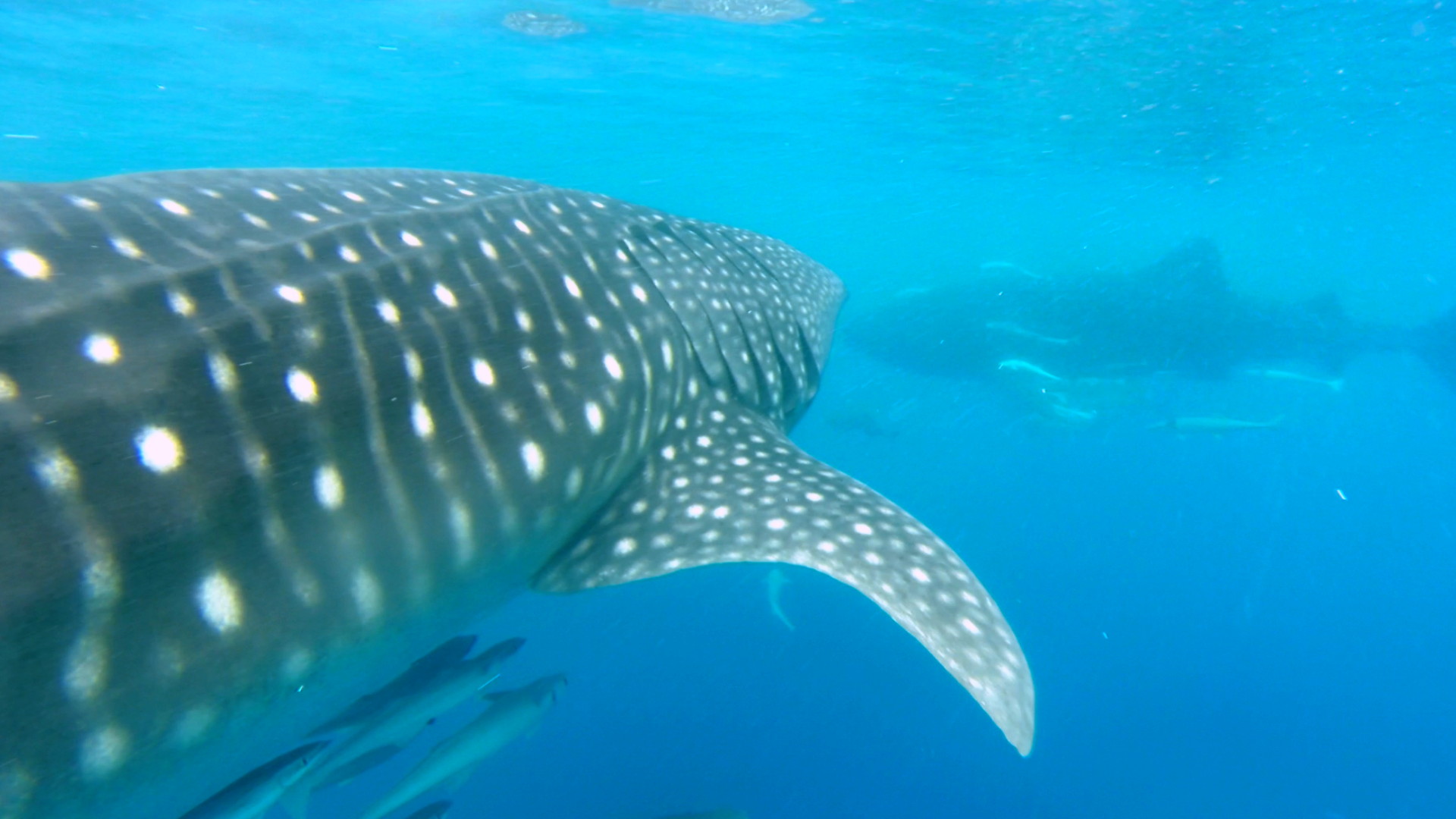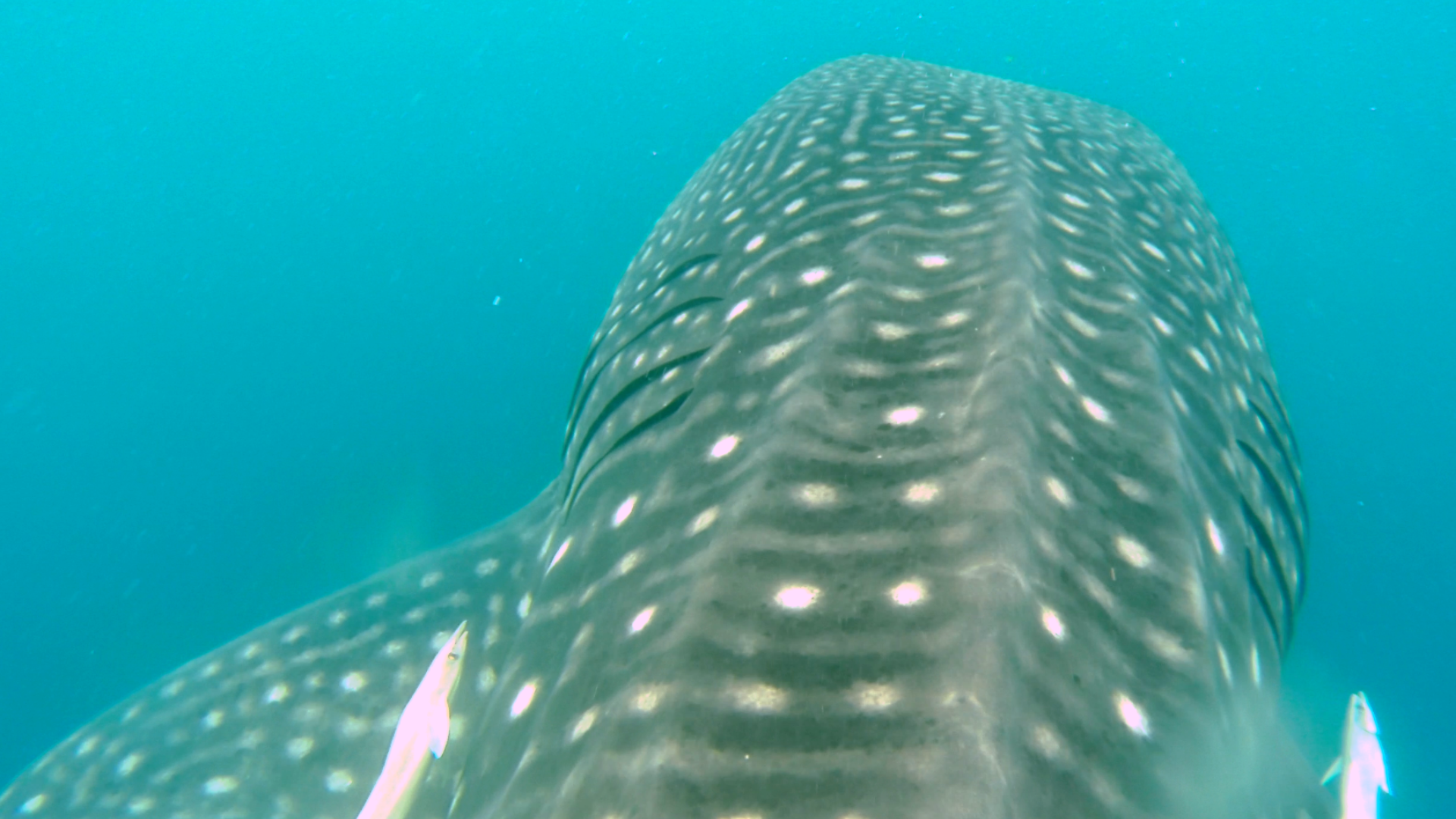Check another item off the bucket list: in November, we made it to Nosy Be to see the whale sharks – considered endangered by some – feeding on the plankton that “bloom” there the same time every year. This capped off an amazing year in Madagascar – just a month prior, we managed to get out to Ile Sainte Marie to see the whales that come there every year to give birth to their young.
Whale sharks are the world’s largest fish, and the largest non-cetacean (whale) animal in the world, measuring up to nearly 13 meters (40 feet) in length and up to 20 tons, though larger (non-verified) exemplars have been reported. The whale sharks off the coast of northwestern Madagascar, near the island of Nosy Be, are allegedly smaller than those found in the open sea, but when you’re in the water with an animal whose mouth is easily four feet wide, such distinctions become academic.
I didn’t really know much about whale sharks when we set out to find them, and I was curious how people manage to spot them, given that they don’t spend a lot of time leaping out of the water like the whales we had seen in October. Our host at the Coco-Komba lodge (on the island of Nosy Komba) explained to us that it’s just a matter of finding the “birds that dive”; the “fish that jump”; and, of course, all of the other boats containing tourists that swarm around any sighting. And fortunately, since we were only scheduled to be there three days, the first morning he would be able to take us out personally on his own boat – without any other tourists!
The next morning, we had a leisurely breakfast and Patrick, our host, equipped us with fins, snorkels, and a picnic lunch and, together with his first mate, we launched out in search of the world’s largest fish.
Once we were a few miles out, it didn’t take long to see what Patrick had been talking about. We came to a series of places where the sea birds were frantically diving into the water while footlong bonitos and yellowfin tuna leaped out of the water constantly, creating a churning area of water about 30 meters across. Thankfully, there were never any other boats swarming around these sites. And after a few different such areas, Patrick finally spotted the gaping mouth of a whale shark poking above the surface, where the shark was skimming the orange plankton that formed a film on the surface and clouded the water…and so he shut off the motors and told us, “go, go go!” Armed with GoPro cameras, we slid into the water, minimizing the splash to avoid spooking the fish. And here’s what we saw:
It was an amazing morning – between 8 am and noon, we must have seen a two dozen of these amazing animals, called “marokintana,” or “many stars” in Malagasy, for the pattern of white dots that cover everything but their bellies. Most of the time, they would ignore us, lazily moving through the water while scores of other fish – basically a floating mini-ecosystem – accompanied them. A few times I’d lose track of the shark in the murky water and come to the surface, where I’d be even more disoriented due to the fish jumping and sea birds diving all around me. “He’s right behind you!” they would shout from the boat. Once, I came to the surface and asked Patrick, “Um, there appear to be ‘normal’ sharks in the water with the whale shark – should I be concerned?”
The next day, our host was busy with other guests, and so he arranged for us to go with a local operator specializing in whale shark spotting. We joined 6 or 7 other tourists and spent hours looking for the fish, but only managed to spot a few juvenile sharks that dived as we entered the water. We noticed that they didn’t appear to be accompanied by the other fish we had seen the day prior. Eventually, the operator gave up, and we found a place where others had reported manta ray spottings. We swam around for a bit, and eventually we started spotting the rays 10-15 meters below the surface as they “flew” through the ocean waters below.
From whale shark watching, we continued to Nosy Sakatia, to an area where green sea turtles are known to feed on the sea grass in waters. We swam with half a dozen or so of these amazing sea reptiles before heading back to the lodge.
Madagascar has been wonderful, not only in terms of the people we have met, but also in terms of its flora and fauna, much of which is not found anywhere else in the world. Green sea turtles and whale sharks can be found elsewhere, but Nosy Be and the small islands that surround it are one of the prime locations to see both of these animals up close, and so our bucket least was just shortened by a couple of items. I highly encourage you to do the same – every year in November. While supplies last.



